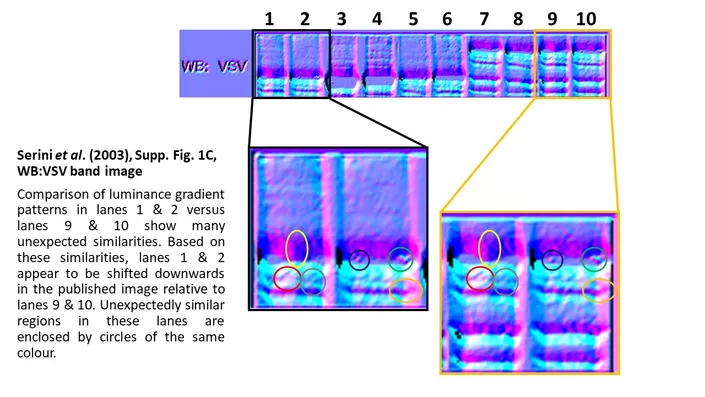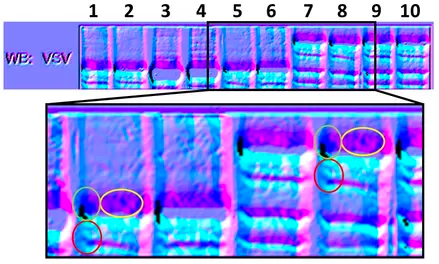A member of the University’s special committee to investigate Stanford President Marc Tessier-Lavigne’s research has stepped aside after The Daily approached the trustee with questions about a potential conflict of interest.
The committee, the creation of which was announced Friday, is composed of members of the Board of Trustees and is investigating allegations of research misconduct in Tessier-Lavigne’s research first brought to light by The Daily last Monday — an investigation that may be growing in scope as several experts continue to identify additional areas of suspicion in papers co-authored by the prominent neuroscientist.
Felix Baker, the only trustee who was appointed to the committee with a bioscience background, will no longer be a member of the committee. This comes after The Daily discovered that Baker’s investment firm, co-founded by him and his brother, maintains an $18 million stake in Denali Therapeutics, a biotechnology company co-founded by Tessier-Lavigne. Now serving on its board of directors and as a scientific advisor, Tessier-Lavigne maintains more than $50 million of stock in Denali.
The Daily contacted Baker on Saturday via email requesting comment on the conflict of interest that could be posed by his stake in Tessier-Lavigne’s company. The Daily also sought comment from the University, which did not respond.
Aidan Ryan, who works at the world’s largest public relations firm Edelman, responded on behalf of the board Sunday afternoon, stating Baker removed himself from the committee “to avoid any questions of potential conflicts.”
Ryan did not comment on why Baker was initially included on the committee or if he had disclosed his investment prior to the board chair’s announcement of the committee’s membership.
Some experts said Baker’s initial appointment has further marred the perception of the investigation, which drew scrutiny for the fact that the board intends to direct the investigation into one of its own members.
Nancy Olivieri, famous in the scientific world for exposing the inefficacy and coverup of a drug designed to treat a blood disorder, wrote in a response before Baker stepped down that his inclusion on the committee “represents another very concerning layer of serious conflict of interest,” wondering, “does Stanford really want this to be exposed?”
“But now that [The Daily has] found it out and will expose it, here is another prediction for what it’s worth: they will remove Felix and put someone else in. Possibly someone just as conflicted whose conflicts are better hidden,” she wrote.
Ryan did not answer a question about whether the board would replace Baker and if so with whom.
Richard Smith, president of the British Medicine Association for more than 20 years, wrote in an email to The Daily that, “It would be wise of the president to step aside while the investigation is underway.” Stepping down from a prominent position “is often what people do when accusations are made against them. It’s not an admission of guilt but an acceptance that it’s difficult to continue to have credibility in a job with such accusations hanging over you,” wrote Smith.
Smith added, “Stanford is setting itself up for disaster in that many will neither believe nor accept the judgement of an inhouse investigation by a committee that includes people with outrageous conflicts of interest.”
He noted that, even without Baker, the investigation is subject to “tremendous conflict of interest” since the board, composed of non-experts with a direct relationship to the person under investigation, chose to conduct the investigation itself.
Smith suggested the board instead “ask an outside agency to investigate.”
“No matter what steps are taken to minimise conflicts of interest there will always be suspicions [if the investigation remains in house],” he wrote.
Elisabeth Bik, the prominent research misconduct expert who has identified a number of errors in Tessier-Lavigne’s CV, agreed, writing that Baker’s presence on the committee “confirms what I was already worried about: these committee members probably know each other very well.”
And the committee’s investigation may continue to grow in scope. Bik, who has begun reviewing more of Tessier-Lavigne’s papers in the days since The Daily’s initial article was released, has reported two more errors on the science anomaly website PubPeer since The Daily’s most recent article on Friday.
Other researchers have also begun combing through Tessier-Lavigne’s research for potential image alteration.
Bryon Hughson, a postdoctoral researcher who received his Ph.D. in ecology and evolutionary biology, reviewed one of the papers cited in the initial article — a work published in 2003 in Nature with Tessier-Lavigne as a co-author — and wrote to The Daily saying he had identified another duplication of a blot with lanes of information duplicated and shifted upwards within the frame.

This “indicates that not only were two separate blots copied and pasted within the same published image, but that the positioning and brightness/contrast of these blots were modified so as to conceal the fact that they are copies. This indicates an intent to deceive readers,” Hughson wrote.
One prominent researcher, who requested anonymity due to the sensitivity of the matter, told The Daily “this one is very significant.”
The researcher also noted that the paper could be worthy of retraction — the most serious way a journal can address an article with errors.
Bik, reacting to the discovery, wrote that “this should earn an immediate Expression of Concern” from Nature. (In Nature, “an Editorial Expression of Concern is a statement from the editors alerting readers to serious concerns affecting the integrity of the published paper” while an investigation is ongoing or being opened.)
Another paper published in Genesis in 2009 seemed to show parts of a blot being replicated and used in figures representing two different experiments, according to Bik.
Nature has not responded to requests for comment since last Monday. The Daily has reached out to Genesis.
The University defended Tessier-Lavigne in a statement last Monday, writing, “he was not involved in any way in the generation or presentation of the panels that have been queried.”
Experts have continued to contest that defense.
“There have been many cases of authors — usually senior people — wriggling out of misconduct by saying they had nothing to do with the misconduct. Why then were they authors?” Smith wrote.
Adam Marcus and Ivan Oransky, co-founders of Retraction Watch and editors of publications in their own rights, agreed.
“So far,” the two wrote in an op-ed, “the limited comments from the university suggest it is following a playbook familiar to politicians: Ignore the issue until they can’t, then say the target had little to do with the allegedly problematic work before conducting an investigation that will remain shrouded in secrecy until some point at which they hope everyone has forgotten about the matter.”
Students, meanwhile, seem antsy. One post on the anonymous social network Fizz, which is only accessible by those with a valid stanford.edu email account, asked students if they believed Marc Tessier-Lavigne was a “fraud.” 738 voters responded “Yes,” while 319 said “No.” A separate poll asking whether students wanted Tessier-Lavigne to resign received 858 yeses, 836 nos and 1,077 responses for “results,” the option students select when they don’t wish to participate, as of early Monday morning.
Faculty opinions writ large are harder to gauge, but several sources speculated that a professor accused of similar misconduct would not receive a public statement from the University commending their “integrity and honor,” as Tessier-Lavigne did, before an investigation had been performed.
The board has yet to announce the methodology of its investigation and what its full scope will entail.
